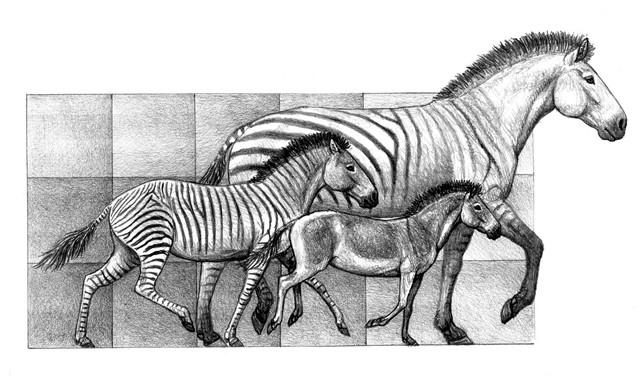
by Mary Caperton Morton Wednesday, May 17, 2017

Artist's depiction of three species of Hipparion, which lived in the Iberian Peninsula between 9 million and 5 million years ago. Credit: Mauricio Anton.
Horses have changed size and shape dramatically over the last 20 million years, evolving from small dog-sized creatures with multiple toes into the large, hoofed grazing animals we see today. But the factors that drove these changes have been unclear. In a new study in Science, scientists tested the long-held theory that horses evolved rapidly to compete with one another during the worldwide expansion of grasslands starting 18 million years ago.
“According to the classic view, horses would have evolved faster when grasslands appeared, developing teeth that were more resistant to the stronger wear that comes with a grass-dominated diet,” said lead author Juan Cantalapiedra of the Natural History Museum in Berlin, in a statement. Traditional thinking suggests “they also became bigger to more effectively digest this low-quality food, and as a strategy against predators in these new, open habitats.”
Comparing the anatomies of 140 species, most of them extinct, from the genus Equus, Cantalapiedra and colleagues found that horse evolution was more gradual than previously proposed. Instead of evolving rapidly into unique forms that filled different ecological niches, the various horse species were actually very similar across space and time, the team found. This suggests that horse evolution was more likely driven by external factors — such as the falling sea levels that allowed horses to expand from North America into Eurasia and Africa in two pulses, roughly 11 million years ago and 4 million years ago — rather than by niche competition among Equus and with other grazing species.
© 2008-2021. All rights reserved. Any copying, redistribution or retransmission of any of the contents of this service without the expressed written permission of the American Geosciences Institute is expressly prohibited. Click here for all copyright requests.